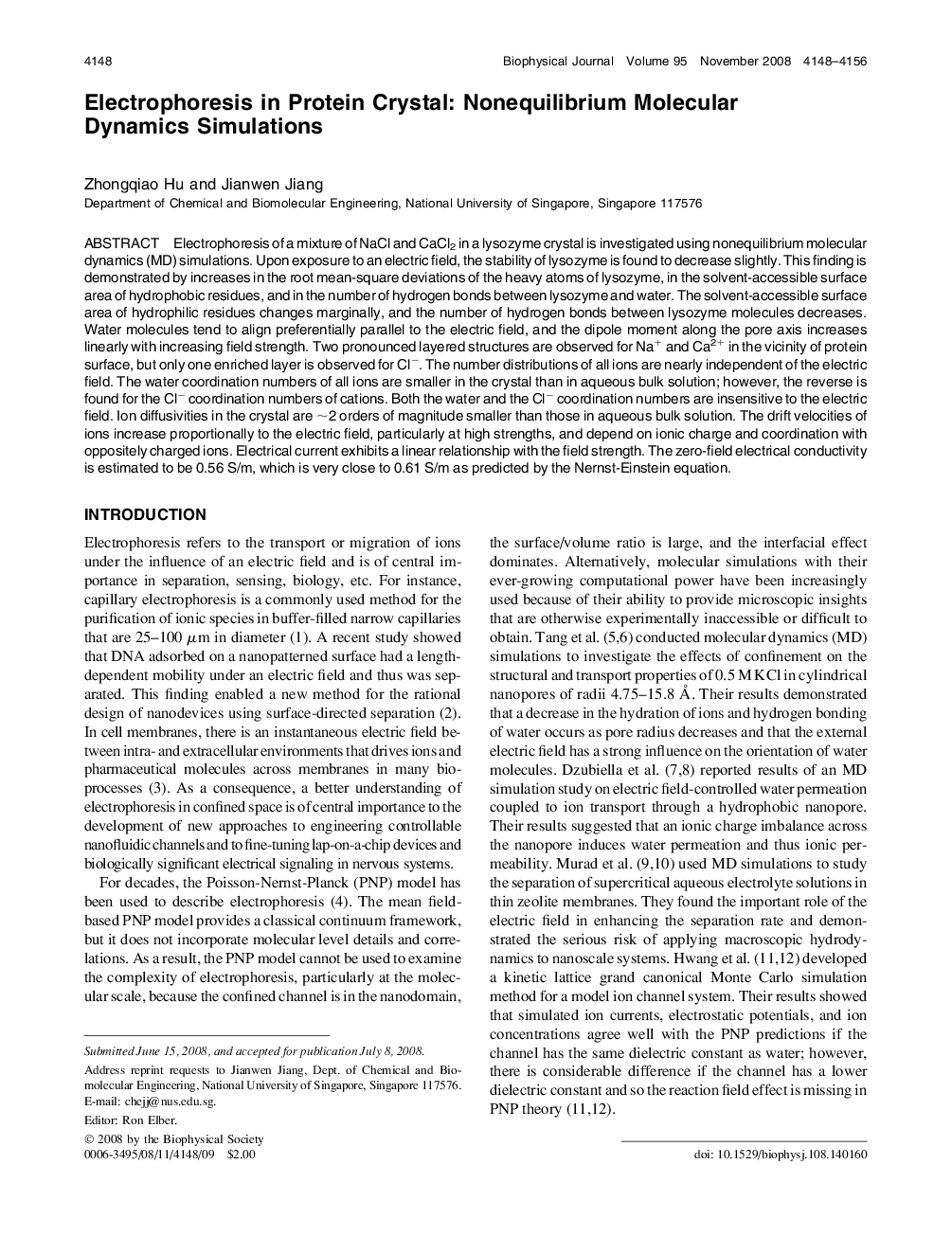| کد مقاله | کد نشریه | سال انتشار | مقاله انگلیسی | نسخه تمام متن |
|---|---|---|---|---|
| 1956468 | 1057858 | 2008 | 9 صفحه PDF | دانلود رایگان |

Electrophoresis of a mixture of NaCl and CaCl2 in a lysozyme crystal is investigated using nonequilibrium molecular dynamics (MD) simulations. Upon exposure to an electric field, the stability of lysozyme is found to decrease slightly. This finding is demonstrated by increases in the root mean-square deviations of the heavy atoms of lysozyme, in the solvent-accessible surface area of hydrophobic residues, and in the number of hydrogen bonds between lysozyme and water. The solvent-accessible surface area of hydrophilic residues changes marginally, and the number of hydrogen bonds between lysozyme molecules decreases. Water molecules tend to align preferentially parallel to the electric field, and the dipole moment along the pore axis increases linearly with increasing field strength. Two pronounced layered structures are observed for Na+ and Ca2+ in the vicinity of protein surface, but only one enriched layer is observed for Cl−. The number distributions of all ions are nearly independent of the electric field. The water coordination numbers of all ions are smaller in the crystal than in aqueous bulk solution; however, the reverse is found for the Cl− coordination numbers of cations. Both the water and the Cl− coordination numbers are insensitive to the electric field. Ion diffusivities in the crystal are ∼2 orders of magnitude smaller than those in aqueous bulk solution. The drift velocities of ions increase proportionally to the electric field, particularly at high strengths, and depend on ionic charge and coordination with oppositely charged ions. Electrical current exhibits a linear relationship with the field strength. The zero-field electrical conductivity is estimated to be 0.56 S/m, which is very close to 0.61 S/m as predicted by the Nernst-Einstein equation.
Journal: - Volume 95, Issue 9, 1 November 2008, Pages 4148–4156